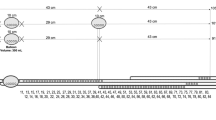Abstract
In the early 19th century, James O'Beirne proposed that a physiologically important sphincter existed at the rectosigmoid junction. Interest in the rectosigmoid junction had been stirred by a common affliction of the time: spasmodic constriction of the rectum. It was believed that many patients suffered from chronic constipation because of rectosigmoid spasms. O'Beirne proposed that a sphincter at the rectosigmoid junction governed the passage of stool from the sigmoid into the rectum. Further, he maintained that spasmodic constriction of the rectum resulted from dysfunction of this rectosigmoid sphincter. His views, however, conflicted with those of such contemporaries as Houston, who emphasized the role of rectal valves in producing spasmodic constriction.
Anatomic studies in the early 20th century found at least a rudimentary sphincter at the rectosigmoid junction in 40 percent of the normal population. Motility studies in the last 35 years have demonstrated unique intraluminal pressure patterns as well as the propagation of retroperistatic waves in this area. The rectosigmoid in patients with constipation shows an increased activity, as if this area is causing a physiologic obstruction to the passage of stool into the rectum. In contrast, the rectosigmoid in patients with diarrhea demonstrates markedly decreased activity, thereby providing unobstructed access of the feces to the rectum. These studies support O'Beirne's hypothesis that a sphincter governs the passage of stool from the sigmoid colon into the rectum.
Similar content being viewed by others
References
Houston J. Observations on the mucous membrane of the rectum. Dub Hosp Rep 1830;5:158–65.
O'Beirne J. New views of the process of defecation, and their application to the pathology and treatment of diseases of the stomach, bowels, and other organs, together with an analytical correction of Sir Charles Bell's views respecting the nerves of the face, Dublin: Hodges and Smith, 1833.
Martin E, Burden VG. The surgical significance of the rectosigmoid sphincter. Ann Surg 1927;86:86–91.
Baillie M. The morbid anatomy of some of the most important parts of the body. London: J Johnson, 1793:111–9.
White W. Observations on strictures of the rectum and colon and other affections which diminish the capacity of the intestinal canal in those parts: including spasmodic constriction of the sphincter ani, heamorrhoidal tumors (called piles), excrescences, and prolapsus ani, accompanied with the mode of treatments, several cases and engravings. London: Longman, Hurst, Rees, Orme, Brown, 1824:28–41.
Copeland T. Observations on some of the principal diseases of the rectum and anus particularly stricture of the rectum, hemorrhoidal excrescences and the fistulae in ano. Philadelphia: A Finley 1811:55.
Colles A. Practical observations upon certain diseases of the anus and rectum. Dub Hosp Rep 1830;5:131–57.
Brodie BC. Clinical lectures on surgery, delivered at St. George's Hospital. Philadelphia: Lea and Blanchard, 1846:325–9.
Kelsey CB. Diseases of the rectum and anus; their pathology, diagnosis, and treatment. New York: William Wood and Company, 1890:337–41.
Osler W. The principles and practice of medicine. Norwalk: Appleton-Century-Crofts, 1892.
Chapman H. Treatise on human physiology for the use of students and practitioners of medicine. Philadelphia: Lea Brothers and Company, 1887:184–6.
Mayo WJ. A study of the rectosigmoid. Surg Gynecol Obstet 1917;25:616–21.
Spriggs EA, Code CF, Bargen JA, Curtiss RK, Hightower NC Jr. Motility of the pelvic colon and rectum of normal persons and patients with ulcerative colitis. Gastroenterology 1951;19:480–91.
Connell AM. The motility of the pelvic colon: I. Motility in normals and in patients with asymptomatic duodenal ulcer. Gut 1961;2:175–86.
Connell AM. The motility of the pelvic colon: II. Paradoxical motility in diarrhoea and constipation. Gut 1962;3:342–8.
Bueno L, Fioramonti J, Ruckebusch Y, Frexinos J, Coulom P. Evaluation of colonic myoelectrical activity in health and functional disorders. Gut 1980;21:480–5.
Read NW. The relationships between colonic motility and transport. Scand J Gastroenterol 1984;19(suppl 93):35–42.
Mann CV. Recent evidence for a sphincteric mechanism at the rectosigmoid junction zone. Mayo Clin Proc 1975;50:529.
Hill JR, Kelley ML, Jr, Schlegel JF, Code CF. Pressure profile of the rectum and anus of healthy persons. Dis Colon Rectum 1960; 3:203–9.
Author information
Authors and Affiliations
About this article
Cite this article
Ballantyne, G.H. Rectosigmoid sphincter of O'Beirne. Dis Colon Rectum 29, 525–531 (1986). https://doi.org/10.1007/BF02562612
Received:
Issue Date:
DOI: https://doi.org/10.1007/BF02562612




